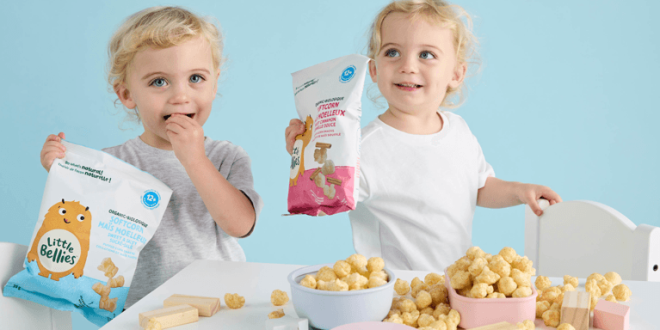Feeding a baby or toddler can feel like a never-ending rollercoaster, right? One minute they’re happily gobbling down pureed peas, and the next, they’re launching them across the room like tiny green missiles. From purees to finger foods, navigating the world of infant and toddler nutrition often coincides with some pretty significant developmental leaps. It’s all connected! Understanding how these milestones and developing motor skills actually influence a child’s ability to eat and self-feed is key to creating positive and, dare I say, successful mealtimes. So, let’s dive in and figure out how these two things dance together, shall we?
Understanding Key Motor Skills for Feeding
Oral Motor Skills
Think about it: eating is actually a pretty complex process! Sucking, swallowing, chewing, and even tongue movement are all essential oral motor skills, especially in those early months. These skills develop over time, starting with the reflexes of infancy and evolving into the more coordinated movements needed for eating solids. Difficulties in these areas? They can definitely affect feeding, leading to things like difficulty latching, problems with textures, or even just a general fussiness at meal times. It’s a lot like learning to play an instrument; it takes practice and coordination.
Fine Motor Skills
Now, let’s talk about those tiny hands! Fine motor skills, like hand-eye coordination, grasping, and that adorable pincer grasp (when they can pick up small objects between their thumb and forefinger) play a huge role in self-feeding. These skills evolve as your little one gets more practice and exposure. Encouraging their development? Easy! Offer them finger foods of different sizes and shapes. Let them explore utensils, even if they mostly end up banging them on the table. (Hey, it’s all part of the learning process, and who knows, maybe they’ll become a drummer later on!)
Gross Motor Skills
You might not immediately think about gross motor skills when you consider feeding, but trust me, they’re important. Trunk control, for example, and the ability to sit upright, have a huge impact on a child’s ability to eat safely and comfortably. When a child has good trunk control, they can focus more on the task at hand – eating! – instead of trying to stay balanced. Think about it: it’s hard to enjoy a meal when you’re constantly wobbling, right?
Developmental Milestones and Their Impact on Feeding
Early Infancy (0-6 Months)
Okay, so in the early infancy stage, it’s really all about breast milk or formula. These are the primary sources of nutrition, and babies rely on those sucking and swallowing reflexes. It’s fascinating to watch them master these skills! But when do you know they’re ready for solids? Keep an eye out for signs like good head control, the ability to sit with support, and an interest in what you’re eating. These are usually good indicators they might be ready to start exploring new flavors and textures, and it’s one of the biggest feeding milestones!
Introducing Solids (6-9 Months)
Ah, the exciting world of purees! This is where things start to get a little more interesting (and possibly messier!). You’re introducing those solids and gradually transitioning to textured foods. Babies learn to manage new textures and flavors, which is directly linked to their oral motor skill development. Don’t be discouraged if they make funny faces or spit things out at first; it’s all part of the process. Each baby will be different, and that’s okay!
Transitioning to Table Foods (9-12 Months)
Get ready for finger foods and self-feeding! This is a big step towards independence. As their fine motor skills improve, they’ll want to start feeding themselves. Think small, soft, and easy-to-handle pieces of food. This is also when you might start seeing some preferences emerge. My little one, for example, became obsessed with blueberries during this phase. Seriously, if I tried to offer anything else, I was met with serious toddler disapproval.
Toddler Years (1-3 Years)
The toddler years! A time of incredible growth, boundless energy, and… picky eating? Yep, it’s pretty common. Toddlers are becoming increasingly independent and want to exert their control. Motor skills are also developing like crazy, which supports their self-feeding abilities. The key is to keep offering a variety of foods, even if they turn their noses up at them sometimes. Remember, it can take multiple exposures for a child to accept a new food. I think I tried 15 times to get my daughter to eat broccoli, but now, she will eat it!
Troubleshooting Common Feeding Challenges
Gagging vs. Choking
Okay, this is an important one. It’s crucial to know the difference between gagging and choking. Gagging is a normal reflex that helps prevent choking. Choking, on the other hand, is a serious emergency. Age-appropriate food textures and sizes are key to preventing both. Make sure to cut foods into small, manageable pieces, especially for younger children. Knowing infant first aid and CPR is always recommended.
Picky Eating
Ah, yes, picky eating. A classic toddler trait. Remember, it’s often linked to their developmental stage and desire for control. Offer a variety of healthy options, but don’t force them to eat. Make mealtimes fun and engaging. Maybe try cutting food into fun shapes or letting them help with meal preparation (supervised, of course!). And try not to stress too much. Seriously, I know it’s easier said than done, but stress can actually make the situation worse.
Food Refusal
Sometimes, a child’s food refusal might be more than just pickiness. There could be underlying reasons, such as sensory sensitivities, medical conditions, or even developmental delays. If you’re concerned, don’t hesitate to seek professional guidance. A pediatrician, registered dietitian, or speech-language pathologist can help identify any potential issues and provide support. Trust your instincts. If something doesn’t feel right, get it checked out.
Tips for Supporting Your Child’s Feeding Development
Create a Positive Mealtime Environment
This is huge. Creating a relaxed and supportive atmosphere during mealtimes can make a world of difference. Minimize distractions like screens and toys. Encourage family meals whenever possible. Make it a time for connection and enjoyment, not stress and pressure. I know, easier said than done! But even just a few small changes can make a big impact.
Offer a Variety of Textures and Flavors
Don’t be afraid to experiment with different foods and textures. This helps promote oral motor development and can prevent picky eating down the road. Introduce new flavors gradually and be patient. It can take time for a child to accept new foods. Make trying new things fun by getting creative!
Encourage Self-Feeding
Even if it’s messy (and let’s be honest, it usually is!), provide opportunities for self-feeding. This allows children to develop their fine motor skills and sense of independence. Offer utensils that are easy for them to grip. Don’t worry about perfection; the goal is to encourage exploration and build confidence. Embrace the mess! You can always clean it up later, and maybe make a fun bath time activity out of it!
Consult with Professionals
If you have any concerns about your child’s feeding development, don’t hesitate to seek guidance from professionals. Pediatricians, registered dietitians, or speech-language pathologists can provide valuable support and advice. Remember, you’re not alone in this journey. And there are people there to help you navigate this world of feeding your baby!
So, there you have it. Feeding your little one really is a journey, isn’t it? It’s a constant learning curve, filled with triumphs, challenges, and maybe a few rogue peas along the way. But by understanding how motor skills and developmental milestones influence feeding, you can create positive mealtime experiences and help your child develop healthy eating habits for life. And hey, don’t forget to enjoy the ride! Every stage is so precious! Now, how about sharing your experiences? What tips have worked for you and your little ones?
 Beverage Zone
Beverage Zone




